WAHNAM TAIJIQUAN TRAINING FROM BASICS TO FREE SPARRING
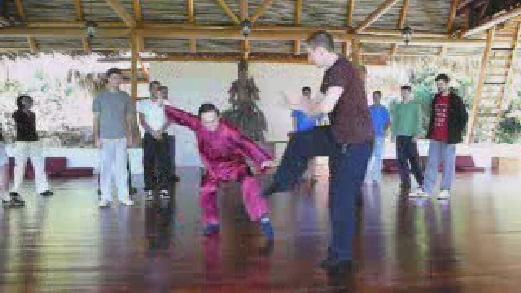
Combat application of Wahnam Taijiquan
In January 2007 Grandmaster Wong conducted a five-day regional Taijiquan course at the Guan Yin Temple on the Blue Mountain in Costa Rica where course participants ranged from fresh beginners to masters. The course covers the Wahnam Taijiquan training methodology from basics to free sparring. The series of video clips below record this training programme, and may serve as a reference source for Taijiquan practitioners.
The Secret of the Internal Force Masters

What was the secret of the great Taijiquan masters who had tremendous internal force? They had numerous methods to develop internal force, but their most important single method was “zhan zhuang”, or stance training.
All Taijiquan masters, as well as masters of other styles who had tremendous internal force, had spent considerable time in “zhan zhuang”.
Cloud Hands: From Chi Flow Movements to Patterns and Sets
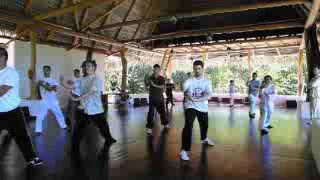
Zhang San Feng taught these “cloud hands” to his inner-chamber disciples to help them attain Tao. Later these “cloud hands” movements were stylized into patterns, and then linked together to form a kungfu set, which came to be known as “Wudang Kungfu”.
A few centuries later, another great scholar-warrior named Chen Wang Ting employed Taiji principles to explain its philosophy, and called this style of kungfu “Taijiquan”.
Developing Combat Skills in Pushing Hands

“Tui Shou”, or Pushing Hands, provides an ingenious method in Taijiquan to develop important combat skills like sensing an opponent's movements and intension, following an opponent's momentum and turning it again him, appropriate body-movement and footwork, being relaxed in combat situations, generating energy flow and building internal force.
Practicing Combat Techniques in Striking Hands
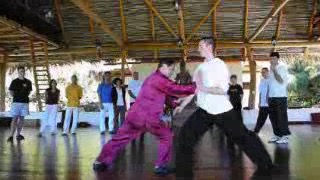
While “Tui Shou” or Pushing Hands develops combat skills, “Da Shou” or Striking Hands trains techniques for combat. A common misconception among many Taijiquan practitioners is that if they are proficient in Pushing Hands they would be effective in combat. This is not necessarily so because they still have not learnt the techniques for combat though they may have the skills.
Applying Kicks, Throws and Grips in Striking Hands
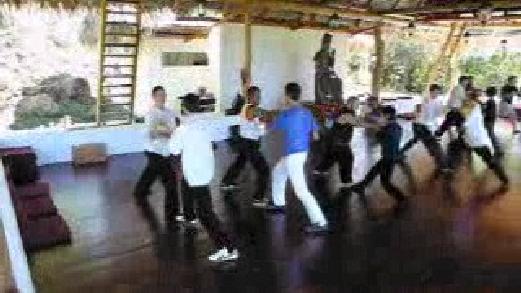
“Da Shou”, or Striking Hands, is an excellent way to learn techniques for application in various combat situations. It involves not just striking but also all the other three categories of attacks, namely kicking, felling and gripping.
By learning the techniques in this section as shown by the video clips here and in the other webpage on Striking Hands, a Wahnam Taijiquan practitioner has a repertoire of techniques sufficient to deal with any attacks! In other words, his combat techniques are complete.
Combat Sequences 1 and 2: Top, Middle, Bottom and Sides

Pushing Hands and Striking Hands are training methods to develop skills and practice techniques. When we have the necessary skills and techniques we apply them in combat sequence training which simulates real fighting.
The twelve fundamental combat sequences taught in Intensive Taijiquan Courses and regular classes are compressed into eight simplified combat sequences without losing the completeness of combat training.
Combat Sequence 3: Pressing Attacks and how to Defend against them
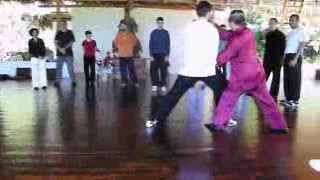
Combat Sequences 1 and 2 cover the four major categories of strikes, namely top, middle, bottom and sides. Sequence 3 introduces the tactic of pressing attacks and how to defend against them.
This video series shows step by step how the combat sequence is developed, why the particular patterns were used and the combat principles underlying them.
Combat Sequences 4 and 5: Thrust Kick, Side Kick and Whirlwind Kick
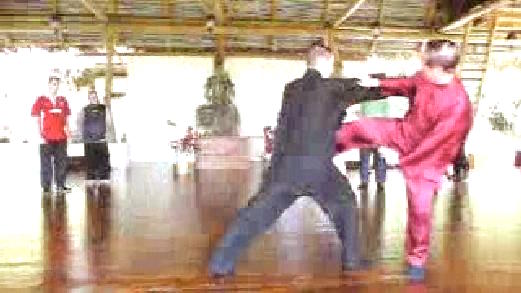
There are some innate weaknesses in kicks. If all other factors were equal, when an exponent executes a kick his balance, stability as well as mobility are not as effective as when his two feet are on the ground.
A skillful exponent not only takes care of such innate weaknesses of kicks, he also create situations when kicks are favorable. This series of video clips on Combat Sequences 4 and 5 which deal with thrust kicks, side kicks and whirlwind kicks, and their defences, puts these principles into practical application.
Combat Sequence 6: Felling Opponents with Carry Tiger Back to Mountain
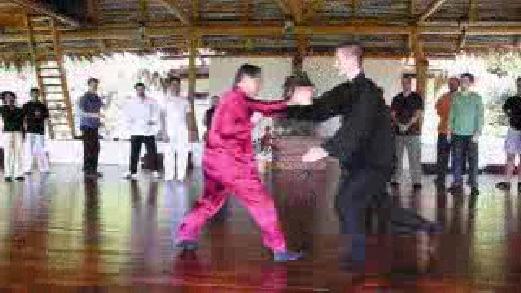
Felling an opponent requires some sophisticated movements. You normally need two or more movements to accomplish this attack, in contrast with strikes and kicks where one movement is sufficient. If the opponent can neutralize any of your movements during your process of executing them, your attack would be ineffective.
In other words, even if he misses your first move, he still can neutralize or counter you in subsequent movements, whereas in a strike or a kick he would be hit.
Combat Sequences 7 and 8: Chin-Na or Gripping Attacks and their Defences
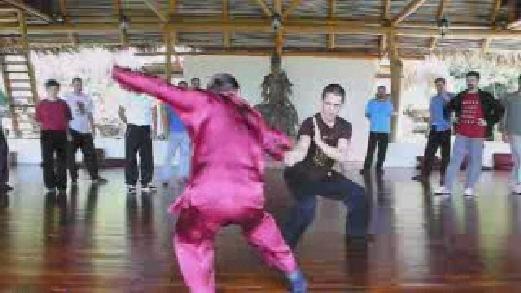
Chin-na (qin-na) or gripping techniques are an important aspect of Taijiquan although many Taiji practitioners may not realize it. Chin-na is unique in kungfu; it is not found in other martial arts in such a sophisticated level.
Hence, there is no proper translation for “chin-na”. A poor substitute is “gripping”. Sometimes it is translated as “holds and locks”. These translated terms are inadequate because “chin-na” surpasses what all these terms represent.
The Eight Simplified Combat Sequences of Wahnam Taijiquan
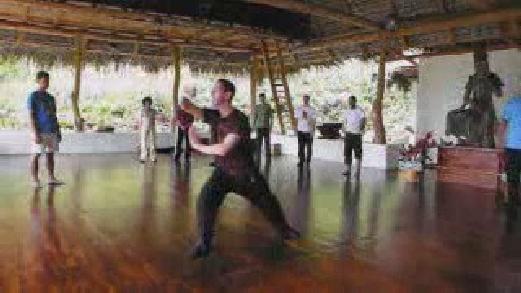
Some students, finding the sequences sophisticated, may be puzzled by the term “simplified”. While it is true that these sequences are “sophisticated” compared to random punching and kicking commonly found in sparring today, they are actually simplified from the Twelve Basic Combat Sequences in our Wahnam Taijiquan.
For us in Shaolin Wahnam, “basic” means not just that they are learnt at the beginning of our Taijiquan training programme but also that they are very important as they form the foundation upon which future development depends.
From Guided Sparring to Free Sparring in Wahnam Taijiquan
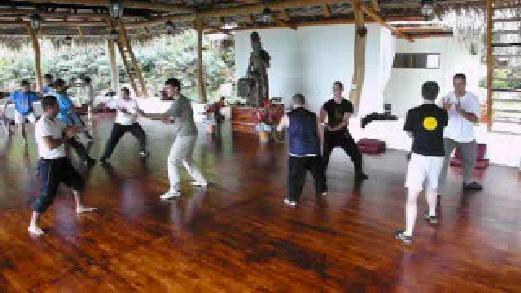
The progress from guided sparring to free sparring was so gradual that it was not easy to define at what point they started free sparring. Nevertheless, participants were free sparring spontaneously in the last few video clips. It was indeed a beautiful and inspiring sight to watch.
What was more inspiring was that not only no one was hurt or showed any anger at his sparring partners, all the participants had much fun, showed much tolerance and care towards one another, built up much comradeship, and were not tired or panting even after sparring for more than an hour.
